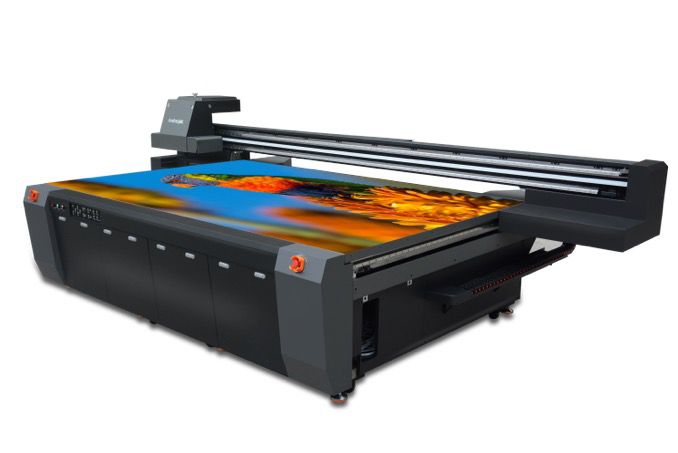UV Flatbed Printer: Applications in the Medical Industry
UV Flatbed Printer: Applications in the Medical Industry
In the realm of medical technology, precision, sterility, and innovation are paramount. The medical industry is constantly evolving, seeking new methods and technologies to improve patient care, enhance diagnostic capabilities, and streamline manufacturing processes. One such technology that has found significant applications in this sector is the UV flatbed printer. This article delves into the various ways UV flatbed printers are being utilized in the medical industry, highlighting their benefits, applications, and future potential.

Understanding UV Flatbed Printers
UV flatbed printers are a type of digital printing technology that utilizes ultraviolet (UV) light to cure or dry ink immediately after it is applied to a substrate. This process allows for instant drying, resulting in high-quality, durable prints that are resistant to fading, scratching, and chemical exposure. The flatbed design enables printing on a wide range of materials, including plastics, metals, glass, and even some flexible substrates, making them versatile for various applications.
Benefits of UV Flatbed Printers in the Medical Industry
Precision and Detail: UV flatbed printers offer exceptional print resolution, allowing for intricate designs and fine details to be reproduced accurately. This is crucial in medical applications where precision is of the utmost importance, such as in the production of surgical instruments or medical device components.
Sterility and Hygiene: The non-contact nature of UV flatbed printing ensures a sterile production environment, reducing the risk of contamination. This is particularly important in medical settings where maintaining a high level of cleanliness is essential to prevent the spread of infections.
Durability and Longevity: The UV-cured inks used in these printers provide excellent resistance to fading, chemicals, and abrasion, ensuring that printed medical products and devices maintain their integrity and legibility over time, even under rigorous use and sterilization processes.
Versatility of Materials: The ability to print on a wide array of materials, including those commonly used in medical devices and equipment, opens up new possibilities for design and functionality. From rigid plastics to flexible membranes, UV flatbed printers can accommodate a diverse range of substrates.
Cost-Effectiveness: Compared to traditional printing methods, UV flatbed printing offers cost savings through reduced setup times, minimal waste, and the ability to print on demand. This is particularly advantageous in the medical industry where production volumes can vary greatly and quick turnaround times are often required.
Applications in the Medical Industry
Surgical Instruments and Tools: UV flatbed printers are used to create high-precision markings and indicia on surgical instruments, ensuring they are easily identifiable and meet regulatory standards. This includes serial numbers, logos, and calibration markings that must withstand frequent sterilization and use.
Medical Device Manufacturing: From printing circuit boards for medical devices to creating customized housings and interfaces, UV flatbed printers enable manufacturers to produce complex, high-quality components quickly and efficiently. This technology supports the development of innovative medical devices by facilitating rapid prototyping and short production runs.
Packaging and Labeling: In the medical industry, clear and accurate labeling is essential for ensuring product safety and traceability. UV flatbed printers can produce durable, high-resolution labels and packaging materials that resist fading and wear, even in harsh environments such as sterilization chambers.
Implantable Devices: The precision and detail offered by UV flatbed printers make them suitable for printing on implantable medical devices, such as orthopedic implants or dental prosthetics. This technology allows for the creation of customized designs that enhance patient comfort and improve device functionality.
Research and Development: UV flatbed printers are invaluable tools in medical research and development, enabling scientists and engineers to quickly prototype and test new devices, materials, and technologies. The ability to print on demand and make rapid design changes accelerates the innovation process.
Personal Protective Equipment (PPE): During times of crisis, such as the COVID-19 pandemic, UV flatbed printers have been used to produce PPE components, including face masks, face shields, and even ventilator parts. The technology’s versatility and speed of production make it an essential tool in rapidly responding to healthcare emergencies.
Future Potential
As the medical industry continues to advance, the potential applications for UV flatbed printers are expected to grow. With ongoing research into new materials and inks, these printers may soon be able to print on even more substrates, including biocompatible materials for implantable devices. Additionally, advancements in software and printing technology will further enhance precision and efficiency, making UV flatbed printers even more indispensable in medical manufacturing and research.
Moreover, the integration of UV flatbed printers with other digital technologies, such as 3D printing and Internet of Things (IoT) devices, could lead to the development of smart, connected medical products that are highly customized and responsive to patient needs.
Conclusion
UV flatbed printers have proven to be valuable assets in the medical industry, offering precision, versatility, and cost-effectiveness in a range of applications. From surgical instruments to implantable devices and personal protective equipment, these printers are enabling medical professionals, manufacturers, and researchers to innovate, improve, and respond to healthcare challenges more effectively. As technology continues to advance, the potential applications and impact of UV flatbed printers in the medical field are likely to expand, further driving progress and improving patient care.
